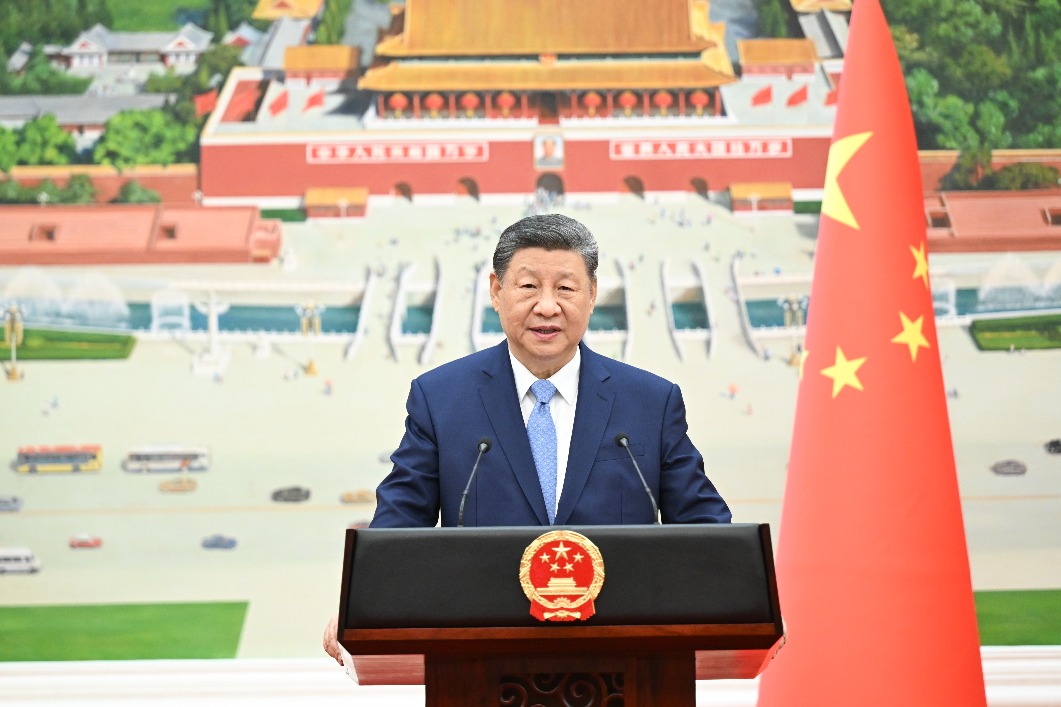Heritage of creativity
Range of expertise stretching back millennia on show as spectacular museums dedicated to various art forms open to the public in Beijing, Lin Qi reports.

Cui Qiming, a recognized national master of arts and crafts, has sculpted jadeite for decades, and his carvings, primarily figures and miniature landscapes, have seen him scoop up national prizes.
One of the works he is particularly proud of is The Four Seas Rejoice, a 1.5-meter-long jadeite screen, a monumental project he participated in back in the 1980s.
At the time, in his 20s, Cui had just graduated from a school of arts and crafts and became a technician at the Beijing Jadeite Engraving Factory. He assisted and learned from revered engravers at the factory on the making of The Four Seas Rejoice, which took three years to complete.
The four-section screen shows a majestic scene depicting nine Chinese dragons between the sky and a roaring river.
"My masters said we need to add a personified quality to the dragons to not only make them vividly alive, but also symbolize the spirit of people embracing the course of reform and opening-up," Cui says.
"People will see some of the dragons look aged, but still powerful, and others represent those in the prime of their lives."
He adds the way artisans treated other details on the screen is no less delicate. "The circling clouds were rendered a sense of great volume, and vapor rises from the river and floats in the air to accentuate a solemn atmosphere."
The Four Seas Rejoice is deemed to be one of the "four national treasures" that Cui's factory produced in the 1980s. The other three jadeite works are A Magnificent View of Mount Taishan, a miniature hill; A Fragrant and Auspicious Gathering, an incense holder; and Myriad Flowers in Full Bloom, a floral basket. Altogether, they took dozens of engravers, like Cui's masters, informed by the expertise of scholars, nearly a decade to complete.
Today, the four treasures are on public view at Craftsmanship of a Great Nation, one of several long-term exhibitions to inaugurate the China National Arts and Crafts Museum and the China Intangible Cultural Heritage Museum, which opened on Feb 6.
The two museums share a six-story building along the northern extension of Beijing's "central axis", which connects several scenic spots in the capital's historic area. The building is an addition to the lineup of modern landmark architecture in the city's Olympic Park area, including the National Stadium ("Bird's Nest") to the south and China Science and Technology Museum to the north. It rises on the east bank of an artificial river, and is described by its builders as an enlarged version of classical duobaoge-display cabinet for treasures-housing precious items of the country's representative arts and crafts, and the cultural traditions embedded in them.
Han Ziyong, head of the Chinese National Academy of Arts who directs the two museums, says that since the birth of Chinese civilization, a variety of traditional handicrafts, as an integral part of the country's folklore and ethnic cultures, have boomed to sparkle with creativity and enduring charm, and the establishment of the two museums continues to position arts and crafts as important in the country's development in the new era.
"Some 80 percent of the 1,300-odd objects on display at the eight opening exhibitions are shown for the first time, primarily from an assembly by the Chinese National Academy of Arts over the past seven decades, and grounded in the academy's extensive field research," Han says.
Apart from exhibits of arts and crafts at Craftsmanship of a Great Nation, a show traces the history of classical Chinese music and another one is dedicated to the guqin, a seven-stringed plucked instrument, played and favored by intellectuals since ancient times.
Han says his institution collects some of the finest examples of the guqin and well-preserved, rare music scores, allowing fruitful studies of the genre.
Also, there are exhibitions about Chinese operas and the art of seal engraving and stone rubbing to suit the needs of both scholars of specific fields and general visitors.
The two museums also show selected vintage New Year woodblock pictures, made at historically prestigious printmaking hubs, such as Zhuxian township in Kaifeng, Henan province, and Yangliuqing township in Tianjin.
Hang Chunxiao, who curates the show, says it celebrates the technical sophistication and rich meaning of what the Chinese have displayed on their walls and gates over the centuries, especially the pictures featuring menshen or doorway-gods, supernatural guardians on the thresholds of homes.
He says New Year pictures express a desire for bliss and prosperity in the New Year, and feature characters, normally drawn from mythology, folk tales and novels. These reveal the rich presentation and depth of Chinese culture which make those decorations independent pieces of art to people today.
The exhibition that is likely to become the most photographed will be one showing replicated mural paintings from 23 caves and Buddhist temple relics, in a stretch of some 1,600 kilometers along the Ancient Silk Road and dated between the fourth and 14th centuries.
Han says the two museums are also planning lectures by artisans, concerts and local opera performances.





Today's Top News
- China sees over 33.7 billion inter-regional trips in H1
- BRICS justifiably calls for IMF reforms
- Xi receives credentials of new ambassadors to China
- Sino-US trade talks key to global supply chain
- Medical insurance covers 95% citizens
- Great opportunities mark 50th anniversary






























